10 Best Yoga Poses for Beginners
Yoga is an ancient practice that connects the mind, body, and spirit. For beginners, it can be intimidating with all the different poses and practices, but yoga is truly for everyone. Whether you're looking to improve flexibility, relieve stress, or build strength, yoga offers a variety of benefits. This guide will walk you through 10 essential poses for beginners, helping you ease into your practice with confidence.
Types of Yoga Poses
Yoga poses, or asanas, are grouped into different categories based on their purpose and the effects they have on the body. Understanding the types of yoga poses helps you navigate your practice and choose poses that suit your needs.
- Standing Poses: These foundational poses, like Mountain Pose (Tadasana) and Warrior Poses (Virabhadrasana), focus on building strength, balance, and stability. They also promote proper alignment and help increase body awareness.
- Forward Bends: Poses such as Seated Forward Bend (Paschimottanasana) and Standing Forward Fold (Uttanasana) stretch the spine, hamstrings, and lower back. They calm the mind and are excellent for relieving stress and anxiety.
- Backbends: Poses like Cobra (Bhujangasana) and Bridge Pose (Setu Bandhasana) open the chest, shoulders, and front body. They strengthen the spine and are known for boosting energy, improving posture, and stimulating the nervous system.
- Balancing Poses: Balancing poses, such as Tree Pose (Vrksasana) and Eagle Pose (Garudasana), challenge your focus and stability while strengthening the core and lower body.
- Twists: Twisting poses, such as Revolved Triangle (Parivrtta Trikonasana) and Seated Twist (Ardha Matsyendrasana), detoxify the body, improve digestion, and release tension in the spine.
- Inversions: Poses like Shoulder Stand (Sarvangasana) and Headstand (Sirsasana) reverse the usual flow of blood and energy in the body. They are invigorating and help improve circulation and focus.
- Restorative Poses: Poses like Child’s Pose (Balasana) and Corpse Pose (Savasana) are designed for relaxation and restoration, allowing the body to fully relax and the mind to settle.
These categories work together to create a balanced and holistic yoga practice.
1. Mountain Pose (Tadasana)
Mountain Pose may seem simple, but it is the foundation for all standing yoga poses. It encourages proper alignment, improves posture, and builds awareness of how to balance the body. This pose strengthens the legs, improves focus, and helps ground you.
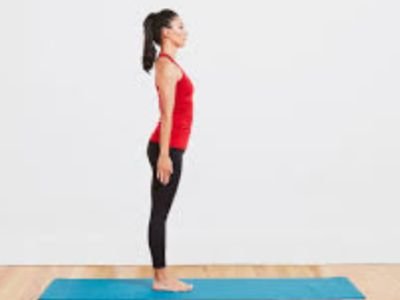
How to Do It:
- Stand with feet together, pressing down evenly through your feet.
- Lift through the crown of your head while keeping your spine straight.
- Engage your thighs, and draw your shoulders down and back.
- Hold for 5-10 breaths, focusing on your balance and alignment.
Benefits:
- Improves posture
- Strengthens legs and core
- Enhances focus and balance
2. Downward-Facing Dog (Adho Mukha Svanasana)
Downward Dog is a widely recognized yoga pose that stretches the hamstrings, calves, and spine. It's also great for strengthening the arms and legs while relieving tension in the back.

How to Do It:
- Start on your hands and knees, with hands shoulder-width apart and knees hip-width apart.
- Tuck your toes under, lift your hips toward the ceiling, and straighten your legs.
- Press your hands into the mat and lengthen your spine, letting your head hang between your arms.
- Keep your heels reaching toward the floor (they don’t need to touch).
Benefits:
- Stretches the entire back of the body
- Strengthens the arms, legs, and core
- Relieves tension and stress
3. Warrior I (Virabhadrasana I)
Warrior I is a powerful standing pose that strengthens the legs, opens the chest and hips, and builds stamina. It's great for improving focus and balance while grounding your energy.
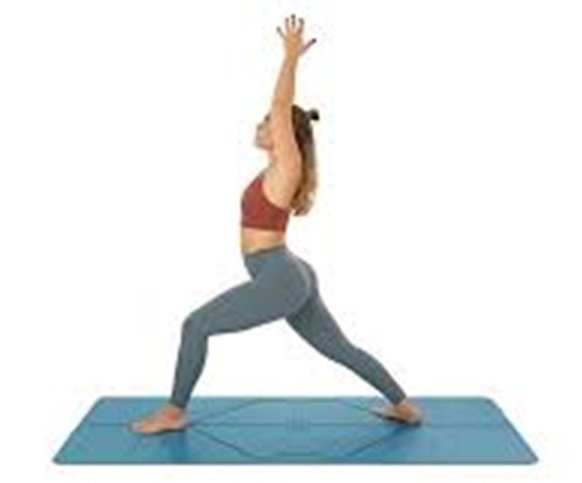
How to Do It:
- From Mountain Pose, step one foot back about 3-4 feet.
- Bend your front knee over the ankle, keeping your back leg straight.
- Raise your arms overhead, with palms facing each other.
- Square your hips to the front of the mat and gaze forward or up at your hands.
Benefits:
- Strengthens legs, hips, and arms
- Opens the chest and lungs
- Improves balance and concentration
4. Cat-Cow Pose (Marjaryasana-Bitilasana)
This gentle flow between Cat and Cow poses is excellent for beginners to warm up the spine, release tension, and improve flexibility. It's often used in yoga sequences to start moving the body mindfully.
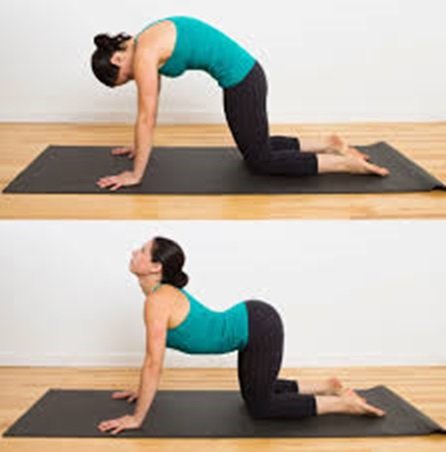
How to Do It:
- Begin on all fours, with wrists under shoulders and knees under hips.
- Inhale, arch your back and lift your head and tailbone toward the ceiling (Cow).
- Exhale, round your back, tuck your chin to your chest, and pull your belly button toward your spine (Cat).
- Repeat this movement for 5-10 breaths, syncing it with your inhale and exhale.
Benefits:
- Increases spine flexibility
- Stretches the neck, chest, and back
- Releases tension in the back and shoulders
5. Child’s Pose (Balasana)
Child’s Pose is a restful pose that you can return to at any time during your practice to relax and restore energy. It stretches the back, hips, and shoulders while promoting relaxation.
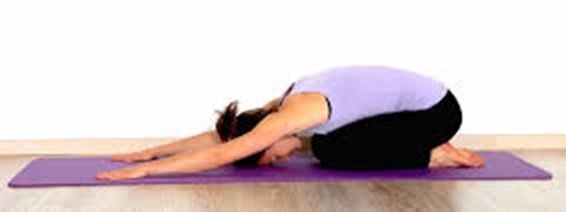
How to Do It:
- Kneel on the floor, with big toes touching and knees wide apart.
- Sit back onto your heels and stretch your arms forward, lowering your forehead to the mat.
- Rest here for several breaths, allowing your body to relax and your mind to calm down.
Benefits:
- Gently stretches hips, thighs, and ankles
- Calms the brain and relieves stress
- Encourages relaxation and introspection
6. Cobra Pose (Bhujangasana)
Cobra Pose is a gentle backbend that strengthens the spine, opens the chest, and improves posture. It's great for beginners who want to start incorporating backbends into their practice.

How to Do It:
- Lie on your stomach with hands under your shoulders and legs extended back.
- Press into your palms and lift your chest while keeping your elbows slightly bent.
- Draw your shoulders down and away from your ears, and keep your gaze forward or slightly upward.
- Hold for 5-10 breaths, then gently lower back to the mat.
Benefits:
- Strengthens the spine and lower back
- Opens the chest and lungs
- Improves posture and relieves mild back pain
7. Tree Pose (Vrksasana)
Tree Pose is a balancing pose that helps you find stability and focus. It strengthens the legs and core while improving balance and concentration.
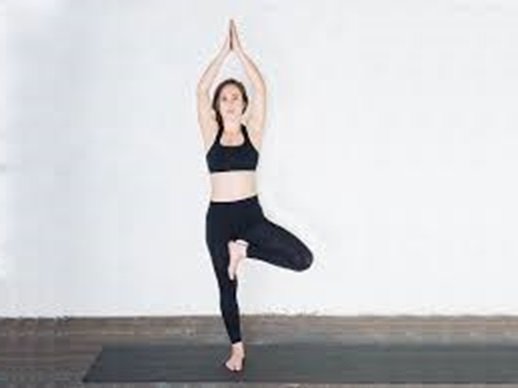
How to Do It:
- Stand tall in Mountain Pose.
- Shift your weight onto one leg, and bring the sole of the opposite foot to your inner thigh or calf (avoid placing it on the knee).
- Press your palms together at your chest or raise your arms overhead.
- Hold for 5-10 breaths, focusing on a steady gaze to help maintain balance.
Benefits:
- Improves balance and stability
- Strengthens legs and core
- Enhances focus and concentration
8. Seated Forward Bend (Paschimottanasana)
This seated stretch is great for lengthening the hamstrings and lower back. It also promotes relaxation and can help reduce stress.
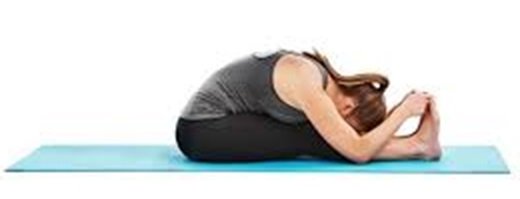
How to Do It:
- Sit on the floor with legs extended in front of you.
- Inhale, reach your arms up, and lengthen your spine.
- Exhale, fold forward from the hips, and reach toward your feet (you can hold your shins or ankles if needed).
- Keep your spine long as you relax into the stretch.
Benefits:
- Stretches the hamstrings and lower back
- Calms the mind and relieves stress
- Improves flexibility in the spine and legs
9. Bridge Pose (Setu Bandhasana)
Bridge Pose is a backbend that strengthens the back, glutes, and hamstrings while opening the chest. It also helps stimulate the thyroid and improves digestion.

How to Do It:
- Lie on your back with knees bent and feet hip-width apart.
- Press your feet into the mat as you lift your hips toward the ceiling.
- Clasp your hands under your back and press your arms into the floor.
- Hold for 5-10 breaths, then slowly lower your hips back down.
Benefits:
- Strengthens the back, glutes, and hamstrings
- Opens the chest and shoulders
- Improves posture and digestion
10. Corpse Pose (Savasana)
Savasana is the final relaxation pose in most yoga practices, allowing your body and mind to fully relax and absorb the benefits of your practice. It's essential for ending your practice in a peaceful, restorative state.

How to Do It:
- Lie flat on your back with legs extended and arms relaxed at your sides.
- Close your eyes, breathe deeply, and let your entire body relax into the mat.
- Stay here for at least 5 minutes, focusing on your breath and releasing any remaining tension.
Benefits:
- Relaxes the body and calms the mind
- Reduces stress and anxiety
- Promotes a sense of inner peace and well-being
Starting a yoga practice as a beginner can feel overwhelming, but these 10 poses provide a strong foundation for building strength, flexibility, and mindfulness. Whether you're looking to improve physical fitness, relieve stress, or connect with your inner self, these beginner-friendly poses will help you start your journey with ease. Remember to listen to your body, breathe deeply, and take your time as you explore each pose. Yoga is a lifelong practice, and every step counts!
Our Top Rated Products
#1st Rated
Liforme Original Yoga Mat: The Best Overall
The Liforme Original Yoga Mat earns its reputation as the best overall yoga mat due to its thoughtful design, which meets the needs of all practitioners, from beginners to advanced yogis. The patented alignment system is a standout feature, providing an invaluable tool for maintaining proper form.
#2nd Rated
Manduka GRP Adapt Hot Yoga Mat
The Manduka GRP Adapt Hot Yoga Mat is the ultimate choice for hot yoga practitioners who want a mat that delivers exceptional performance in every aspect. With its sweat-activated grip, durable construction, and eco-friendly design, it’s a mat that will support you through countless sessions, helping you maintain stability and focus.
#3rd Rated
Amazon Basics Yoga Mat: The Best Budget Option
The Amazon Basics 1/2 Inch Extra Thick Exercise Yoga Mat with Carrying Strap is an excellent choice for those seeking comfort, support, and affordability in their yoga practice. Its combination of features, including extra thickness, non-slip surface, and portability, make it a standout option for budget-conscious buyers.


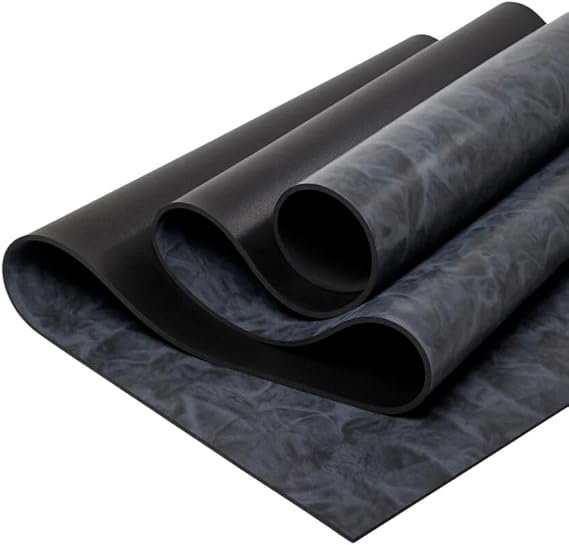

April 12, 2025 @ 11:45 PM
I’m extremely inspired with your writing abilities and also with the structure on your blog. Is this a paid subject or did you customize it your self? Either way keep up the nice quality writing, it’s uncommon to peer a nice blog like this one these days!
August 18, 2025 @ 10:16 PM
hiI like your writing so much share we be in contact more approximately your article on AOL I need a specialist in this area to resolve my problem Maybe that is you Looking ahead to see you